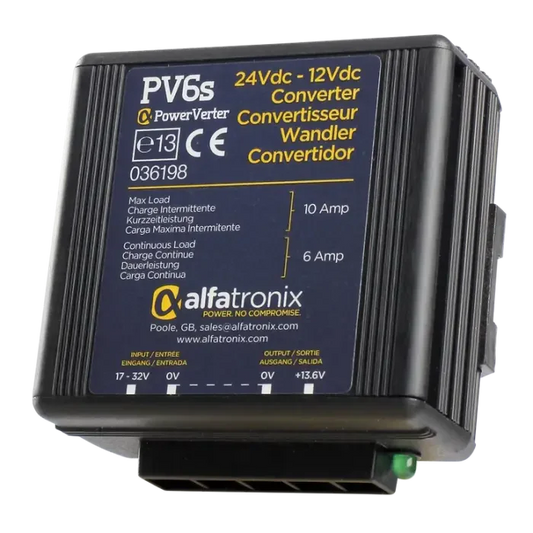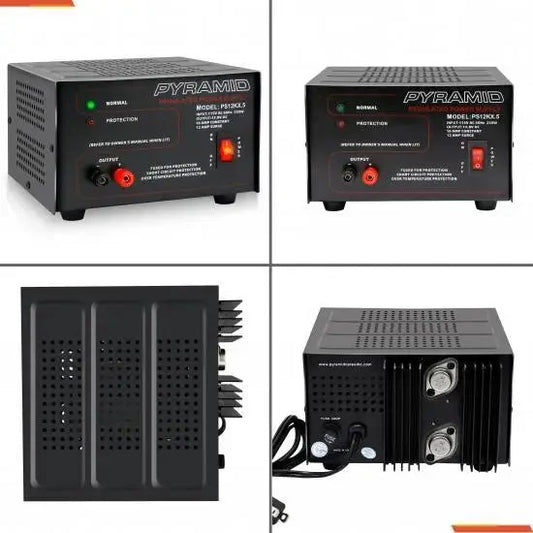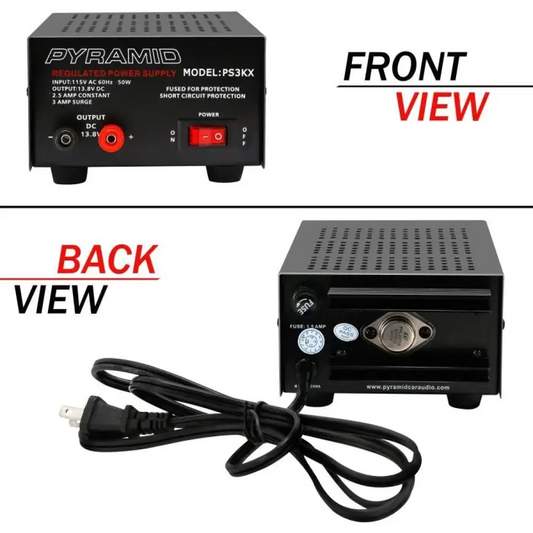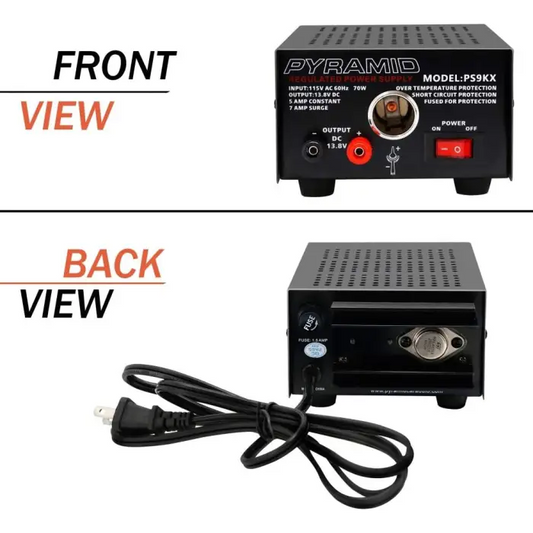12V DC Power Supplies for Ham & CB Radio
Powering your 12V mobile or CB radio indoors? You've come to the right place. A dedicated DC power supply is the heart of any base station, converting your home's 110V AC wall power into clean, stable 13.8V DC. Using a cheap, "dirty" power source can damage your expensive radio equipment. Our curated collection of linear and switching power supplies from top brands like Samlex, Pyramid, and ICT ensures your rig gets the stable power it needs to perform at its best.
-
Alfatronix 24V to 12V DC Voltage Converter (3A-24A Models)
Vendor:AlfatronixRegular price From CHF 47.00Regular priceUnit price perCHF 0.00Sale price From CHF 47.00 -
ICT COMM SERIES ICT12-20 Desktop 12V DC 20A Power Supply
Vendor:ICTRegular price CHF 145.00Regular priceUnit price per -
Pyramid PS12KX 10A / 12A Peak Linear Power Supply
Vendor:PyramidRegular price CHF 87.00Regular priceUnit price per -
Pyramid PS14KX 12A / 14A Peak Linear Power Supply
Vendor:PyramidRegular price CHF 96.00Regular priceUnit price per -
Pyramid PS3KX 2.5A / 3A Peak Linear Power Supply
Vendor:PyramidRegular price CHF 52.00Regular priceUnit price per -
Pyramid PS7KX 5A / 7A Peak Linear Power Supply
Vendor:PyramidRegular price CHF 58.00Regular priceUnit price per -
Pyramid PS9KX 5A / 7A Peak Linear Power Supply w/ Lighter Port
Vendor:PyramidRegular price CHF 70.00Regular priceUnit price per -
Samlex SEC-1212 10A / 12A Peak Switching Power Supply
Vendor:Samlex AmericaRegular price CHF 156.00Regular priceUnit price per -
Samlex SEC-1223 23A / 25A Peak Switching Power Supply
Vendor:Samlex AmericaRegular price CHF 191.00Regular priceUnit price per -
Samlex SEC-1235M 30A Switching Power Supply w/ Analogue Meters
Vendor:Samlex AmericaRegular price CHF 191.00Regular priceUnit price per
Purchase With Confidence
-
 LEARN MORE
LEARN MOREShipping Insurance for peace of mind
-
 LEARN MORE
LEARN MOREGet the gear you want today, pay tomorrow
-
 LEARN MORE
LEARN MOREOptional warranty for eligible items




















